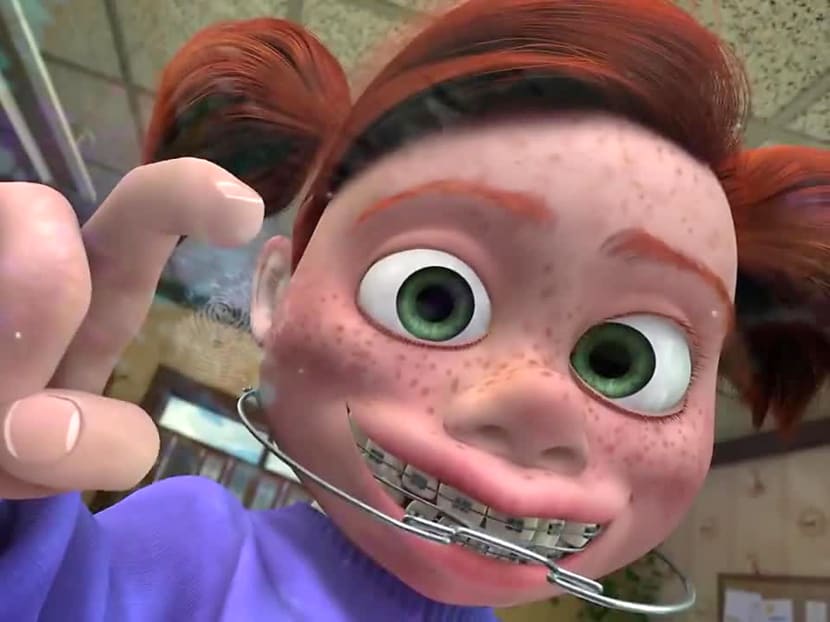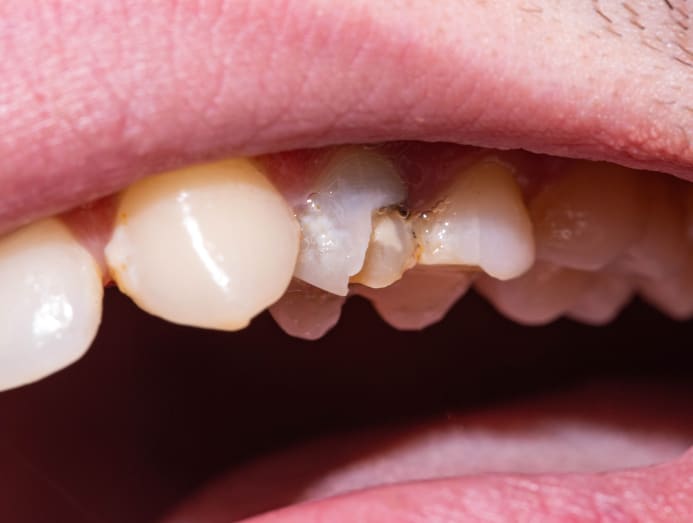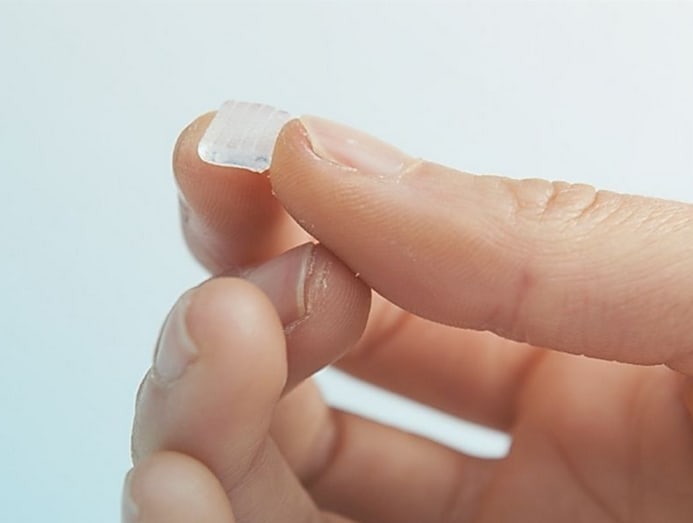Chipped, cracked teeth: How to ease the pain and why braces could help
Yes, aside from bad eating habits (stop biting into that chilli crab), having crooked teeth or a bad bite can increase the risk.

(Screen grab: Finding Nemo)
When it comes to teeth, we want them whiter, straighter and without cavities, please.
But not many would think about taking steps to prevent chips and cracks, which probably explains the times we’ve resorted to tearing open potato chip packets with our teeth without a second thought. Or chomping down on hard shells with our molars during a crab feast.
Sometimes, an unfortunate fall or impact from playing sports can also lead to these dental misadventures, as can bruxism or teeth grinding during sleep.
No matter the cause, a chipped front tooth or cracked molar should not be taken lightly, even when there is little or infrequent pain, or pain only brought on by chewing or eating hot or cold food.
Such issues increase the risk of bacterial infection through the exposed damaged area, said Dr Yvonne Tan, a dental surgeon and senior staff with SingHealth Polyclinics.
This makes the affected tooth “weaker and at risk of further damage if left unattended”.
WHAT CAUSES CHIPPING OR CRACKING?
The shiny, smooth enamel that covers each tooth is 96 per cent mineral, rendering it damage-resistant even after tens of thousands of years as seen in archaeological finds.
However, teeth aren’t indestructible. “A tooth would chip when the enamel weakens or erodes due to cavities or tooth decay,” said Dr Tan.

The culprits? Alcohol aside, these also include seemingly innocuous food and drinks that contain acid such as coffee, fruit juices and spicy food, said Dr Tan.
The “heavy and continuous consumption” of these food and drinks “will break down or wear off the enamel on the surface of your tooth, leaving it exposed and fragile”, she explained.
Of course, age also plays a role in the dental weakening. The older you are, the more exposed your teeth are to these eroding agents. “Individuals above the age of 50 are at a higher risk of chipped teeth,” said Dr Tan.
But lest you think upping your calcium intake might strengthen the enamel or reverse the erosion, it doesn’t, she said.
HOW BRACES MAY HELP
A beautiful smile is one of the biggest motivators for getting one’s teeth straightened with braces.
But here’s another reason to add to your list if you’re considering them: Crooked teeth or a bad bite (also known as malocclusion) can lead to chipped or cracked teeth, said Dr Tan.
Individuals above the age of 50 are at a higher risk of chipped teeth.
“When the upper teeth and the lower teeth do not properly fit together, it will negatively affect certain parts of the teeth. Over time, these teeth will begin to weaken, sometimes making them much more susceptible to chips,” she said.
About 2 to 3 per cent of the patients at Singhealth Polyclinics are treated for malocclusions. It's a small percentage but Dr Tan noted that this could be due to the lack of awareness regarding the issue.
The causes of malocclusions are varied. They could be due to habits such as bottle feeding, mouth breathing, thumb sucking, tongue thrusting or lip sucking.
The misalignment could also be genetically linked, such as inheriting large teeth and a small jaw from either of your parents.
Generally, the different types of malocclusions can be as follows, said Dr Tan:
- An overbite
When the upper front teeth overlap or cover part of the lower front teeth.
- An underbite
It is sometimes referred to as an anterior crossbite, where the lower jaw juts out further than the upper jaw.
- An openbite
The upper and lower teeth do not overlap or touch in some cases, and there is a gap between the teeth. A posterior open bite is when the upper and lower teeth meet, but not the back teeth.
- A crossbite
The upper teeth fit inside the lower teeth, causing misalignment to the teeth, bone or both. (See Instagram post below.)
- An edge-to-edge bite
The biting edges of the upper front teeth bite directly onto the lower front teeth.
- Crowding
There is not enough space in your mouth for teeth to emerge properly.
CR-AAACK! WHAT NOW?
Make an appointment with your dentist pronto. In the meantime, take an over-the-counter (OTC) painkiller to reduce the pain and inflammation, advised Dr Tan.
If you can’t see your dentist soon enough, use dental wax (which you can find at pharmacies) to coat the jagged edge of the tooth to prevent irritation to your tongue and gums.

When chewing, avoid putting pressure on the affected tooth and stick to soft food, said Dr Tan.
How the tooth is repaired depends on the extent of the damage. “For small chips, your dentist may file or polish it to smoothen the rough edges,” said Dr Tan, adding that composite resins may also be used to fill uncomplicated chips or even rebuild the tooth.
“For a more severe chip, your dentist may restore the tooth with a crown, onlay or veneer to protect the tooth from infection,” she said.
If the tooth’s pulp, which is the living part consisting of blood vessels and nerves, is affected, the dentist may have to perform a root canal treatment before placing a crown over the tooth, said Dr Tan. Sometimes, you may have to lose the tooth if the damage is extreme.
Meanwhile, prevention is better than cure, said Dr Tan. That means doing what your dentist has always advised: Brush at least twice a day, floss daily and make at least yearly dental appointments.
“Avoid acidic and sugary food and drinks as much as possible as they can erode enamel and increase the risks of developing chipped teeth. Yes, that means cutting back on that bubble tea that you love,” she said.






